When to Seek Help From a Speech Pathologist
Introduction to Speech Pathology and Its Importance
Speech development and communication skills form the foundation for effective interaction, learning, and social integration. Recognizing when speech or language challenges require professional intervention is essential for children and adults alike. This article explores the critical signs indicating the need for a speech-language pathologist, typical developmental milestones, the value of early intervention, guidelines for identifying communication disorders, and factors influencing the timing for seeking therapy.
Recognizing Signs and Symptoms That Indicate the Need for Speech Pathology Intervention
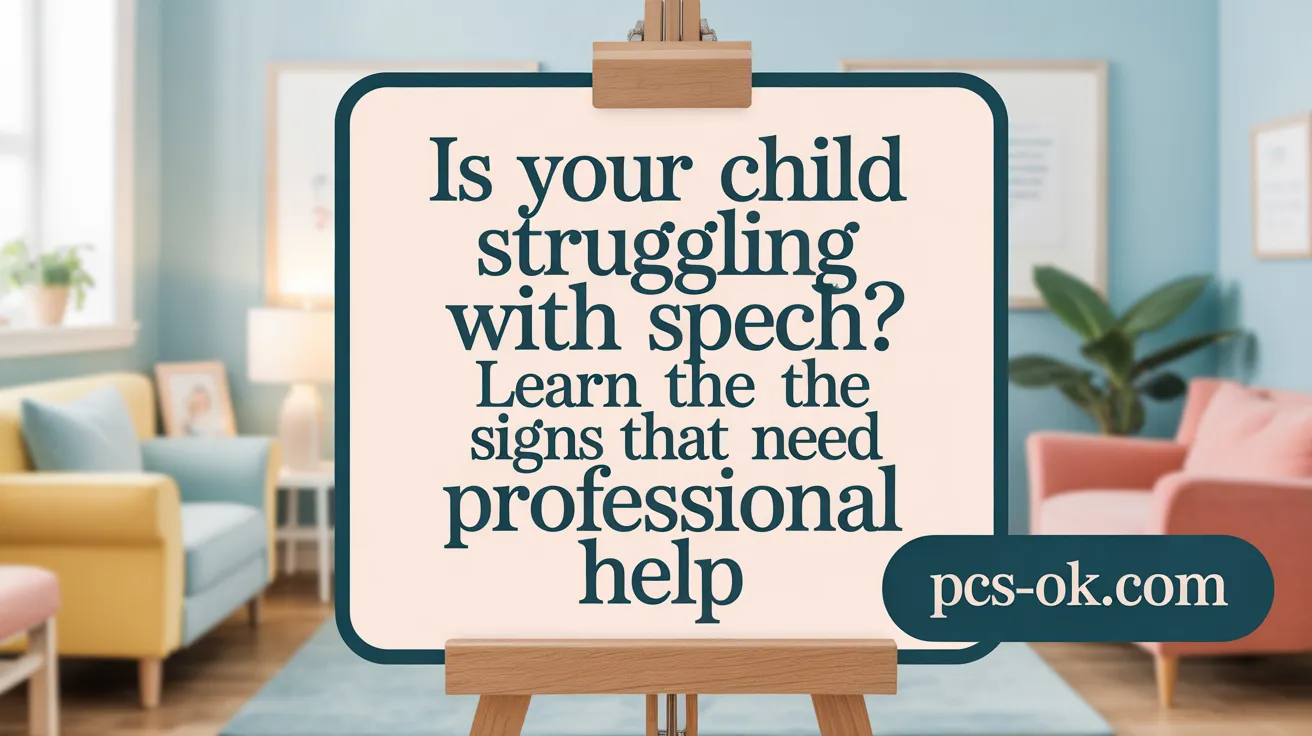
What are the common signs and symptoms that indicate the need for speech pathologist intervention?
Parents and caregivers should be attentive to certain behaviors and developmental milestones to determine whether their child might benefit from speech therapy. Typical signs include difficulty pronouncing words correctly, limited vocabulary, and trouble forming sentences, especially if these issues are observed beyond the usual age expectations.
In infants, a delay in babbling—such as not babbling by 6 to 9 months—or not responding to their name by 12 months can be early indicators of speech or language delays. By age 2, children usually have a vocabulary of 50 words or more and start combining words into simple phrases. Less than this may suggest the need for a professional evaluation.
Other signs include persistent speech sound errors, such as substituting or omitting sounds beyond the typical age range, or distortions that make speech unintelligible. Children who exhibit stuttering or repetitions of sounds and syllables may have fluency issues that benefit from early intervention.
Voice disturbances like hoarseness, breathiness, or a raspy quality can signal voice disorders requiring assessment. Difficulties understanding instructions or following directions, as well as social communication problems—such as avoiding eye contact, limited gestures, or difficulty engaging with peers—also highlight the potential need for therapy.
Additionally, oral-motor issues, where a child has trouble with feeding, swallowing, or controlling facial and oral muscles, should be evaluated by a speech-language pathologist.
Early identification of these signs is crucial. Intervention can not only improve speech clarity and language skills but also reduce frustration and prevent social or behavioral problems later on.
| Signs in Children | Description | Typical Age Range | Additional Notes |
|---|---|---|---|
| Delayed babbling | Not babbling by 6–9 months | 6-9 months | Early sign of speech delay |
| Limited vocabulary | Few words at 24 months | 2 years | Less than 50 words, or no two-word phrases |
| Speech sound errors | Omission or distortion of sounds | 3-4 years | Speech should be intelligible 70-80% |
| Stuttering | Repetitions, hesitations | 2-3 years | May need therapy for fluency |
| Voice problems | Hoarseness, pitch issues | 2 years and up | Can affect social interactions |
| Social communication | Poor eye contact, gestures | Under 2 years | Social cues are crucial for language development |
When should adults seek speech evaluation?
Adults experiencing slurred speech, difficulty understanding others, or frequent requests for repetitions should seek a consultation. Changes in voice quality, such as hoarseness or pitch alterations, can indicate underlying conditions needing diagnosis and treatment. Speech therapists also assist individuals with speech and language recovery post-stroke, after traumatic brain injury, or due to neurological diseases.
Are oral-motor or feeding issues signs for evaluation?
Yes. Challenges with chewing, swallowing, controlling liquids, gagging, or coughing during eating may be related to broader speech and swallowing disorders. Such issues require assessment and specialized therapy to ensure safety and health.
Early detection and intervention improve communication skills and prevent further difficulties. Consulting a qualified speech-language pathologist can address a wide range of speech, language, voice, and swallowing concerns effectively, supporting improved interaction and quality of life for both children and adults.
Understanding Speech and Language Developmental Milestones
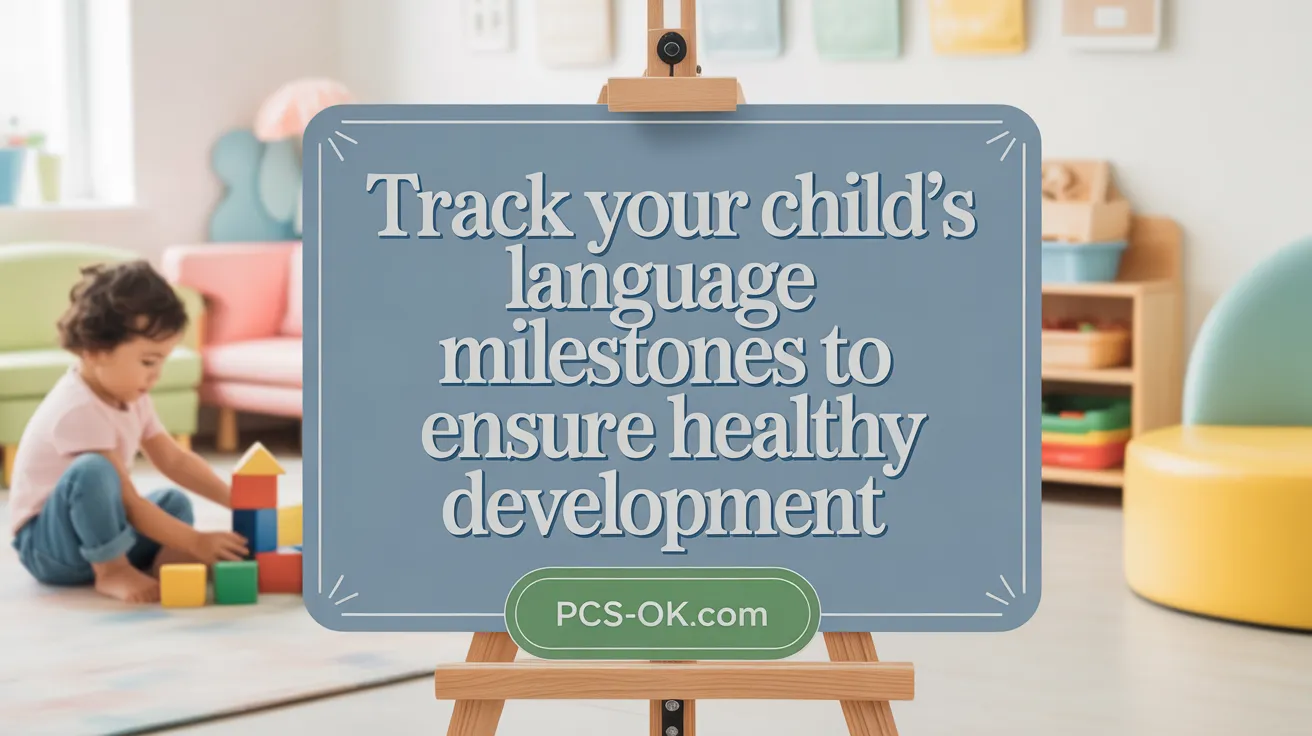
What are the typical developmental milestones related to speech and language in children?
Children tend to follow a predictable pattern of speech and language development from birth to age five. By six months, most infants start to coo and babble, playing with sounds and improving their vocal skills. Around their first birthday, many children say their first words and begin to combine two words into simple phrases.
Between ages 2 and 3, children usually expand their vocabularies to over 50 words. They start using two- or three-word phrases and can understand basic instructions, recognize body parts, and grasp simple concepts.
From ages 3 to 4, language becomes more complex. Children begin to recognize colors, form complete sentences, and describe objects and actions. They can also answer questions and follow simple stories.
By ages 4 to 5, children are generally telling stories, answering more complex questions, and using longer, more detailed sentences. Their vocabulary can reach over 1,000 words, and their speech becomes clearer and more sophisticated.
These milestones help parents and caregivers monitor their child’s progress. Recognizing typical development allows early identification of delays. When a child falls behind these benchmarks, it might be a sign to consult a speech-language pathologist for assessment and possible intervention.
Expected vocabulary size and sentence complexity at different ages
| Age Range | Vocabulary Size | Sentence Length | Additional Skills |
|---|---|---|---|
| 6 months | Babbling, few sounds | N/A | Responds to familiar voices |
| 12 months | 1-3 words | N/A | Recognizes names, points to objects |
| 18 months | 50+ words | Two-word phrases | Expresses needs and wants |
| 2 years | 50-100 words | Short 2-3 words | Follows simple instructions |
| 3 years | ~1,000 words | Longer sentences | Asks questions, tells simple stories |
| 4 years | Over 1,000 words | 4-6 words in a sentence | Uses complex sentences and concepts |
Importance of milestones as a guide for monitoring development
Milestones serve as a guide for parents and professionals to ensure children are on a healthy developmental trajectory. Meeting these key indicators within expected timeframes suggests typical neural and emotional growth. Conversely, significant delays—such as not combining words by age two, or having limited vocabulary—might indicate underlying issues like speech or language disorders. Early detection facilitates timely intervention, which greatly improves outcomes. Recognizing these signs early helps prevent frustration, behavioral problems, and social challenges later in life, ensuring children build strong communication skills crucial for their overall development.
When to Seek Professional Help for Speech or Communication Concerns
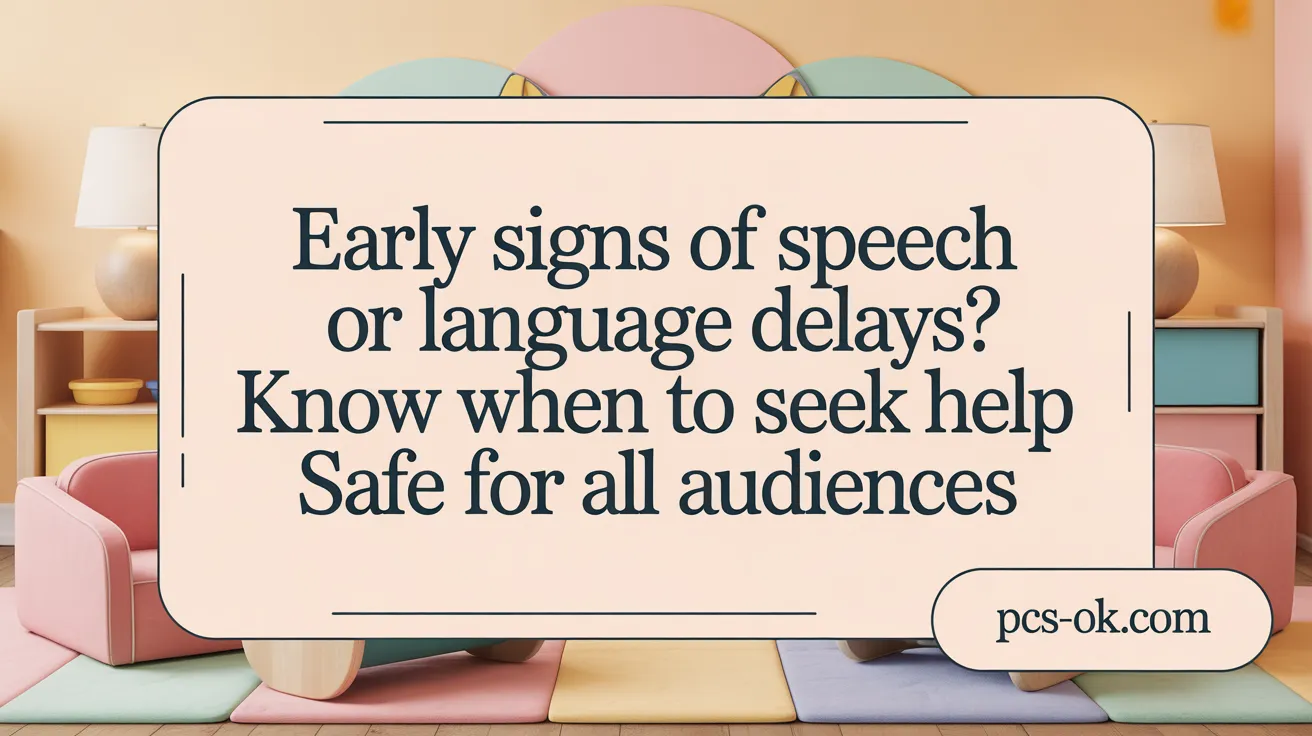
Age-specific red flags for children including delayed babbling and lack of meaningful words
Children develop speech and language skills in stages, but some signs indicate a need for professional evaluation. For infants under 18 months, a lack of babbling or gestures such as pointing can be concerning. By 12-15 months, children should typically make a variety of sounds, and produce their first words. When a child reaches 16-18 months without meaningful speech or attempts to communicate through gestures or sounds, it may warrant a consultation.
Between 18-24 months, signs like grunting instead of speaking, not using two-word phrases, or leaving off the ends of words suggest delays. Should a child not have a vocabulary of around 50 words by age 2, or struggle to put simple words together, professional help is advisable.
In children ages 2-4, mixing fewer than 50 words or speaking mostly unintelligible speech points to potential issues. For kids 4-5, behaviors such as repeating sounds or words excessively, or trouble following classroom directions, can indicate a need for intervention.
It is also crucial to recognize signs like difficulty with articulation, voice quality changes, or swallowing issues in both children and adults. Persistent problems, such as speech that is incomprehensible in context or declining vocabulary, should be evaluated early.
Adult situations that require evaluation such as sudden speech changes or voice problems
Adults also need to seek help if they notice sudden shifts in speech patterns, such as slurred speech, or difficulty forming words. Voice problems like hoarseness that persist or worsen, or changes in pitch and volume, should be assessed by a speech-language pathologist.
Individuals recovering from neurological events such as stroke, head injury, or neurological diseases like Parkinson’s or ALS may experience speech, language, or swallowing difficulties that necessitate professional intervention. Even without medical conditions, adults experiencing persistent communication challenges should seek evaluation to identify underlying issues.
How to start the process by consulting pediatricians or healthcare providers
The first step in addressing speech concerns is consulting a pediatrician or healthcare provider. Parents should discuss their observations and concerns, such as limited vocabulary, difficulty understanding or expressing needs, or lack of social interaction cues.
Healthcare providers can perform initial screenings and decide if a referral to a speech-language pathologist is necessary. These assessments often involve play-based and age-appropriate tests to evaluate speech, language, and swallowing functions.
If the provider suspects a disorder, they will recommend a speech-language evaluation. Early assessment can lead to timely intervention, which can significantly improve communication outcomes.
In cases involving adults or specific medical conditions, consulting with specialists or healthcare providers familiar with speech and swallowing disorders is essential for diagnosis and tailored therapy planning.
| Age Range | Common Signs | Typical Development Milestones | When to Seek Help | Additional Notes |
|---|---|---|---|---|
| 6 months | Little or no babbling | Babbling begins | No babbling or gestures by 12 months | Early signs of delays |
| 12-15 months | Few sounds, no first words | First words emerge | No words or gestures | Delay beyond expected milestones |
| 18-24 months | Pointing but no words, leaving off ends of words | Two-word phrases | Lack of vocabulary of 50 words | Sign of potential delay |
| 2-4 years | Limited words, unintelligibility | 50-100 words, longer sentences | No meaningful speech | Speech clarity issues |
| 4-5 years | Repeating sounds, difficulty following directions | Full sentences, understanding commands | Repetitive speech or difficulty in social settings | Speech patterns requiring assessment |
| Adults | Slurred speech, voice issues | Consistent speech clarity | Sudden change or persistent voice problems | Medical or neurological causes |
Recognizing early signs and initiating professional evaluation can make a significant difference in a child’s communication development or an adult’s quality of life. If any concerns arise, consulting qualified speech-language pathologists ensures appropriate diagnosis and intervention.
The Critical Role and Benefits of Early Intervention in Speech Development
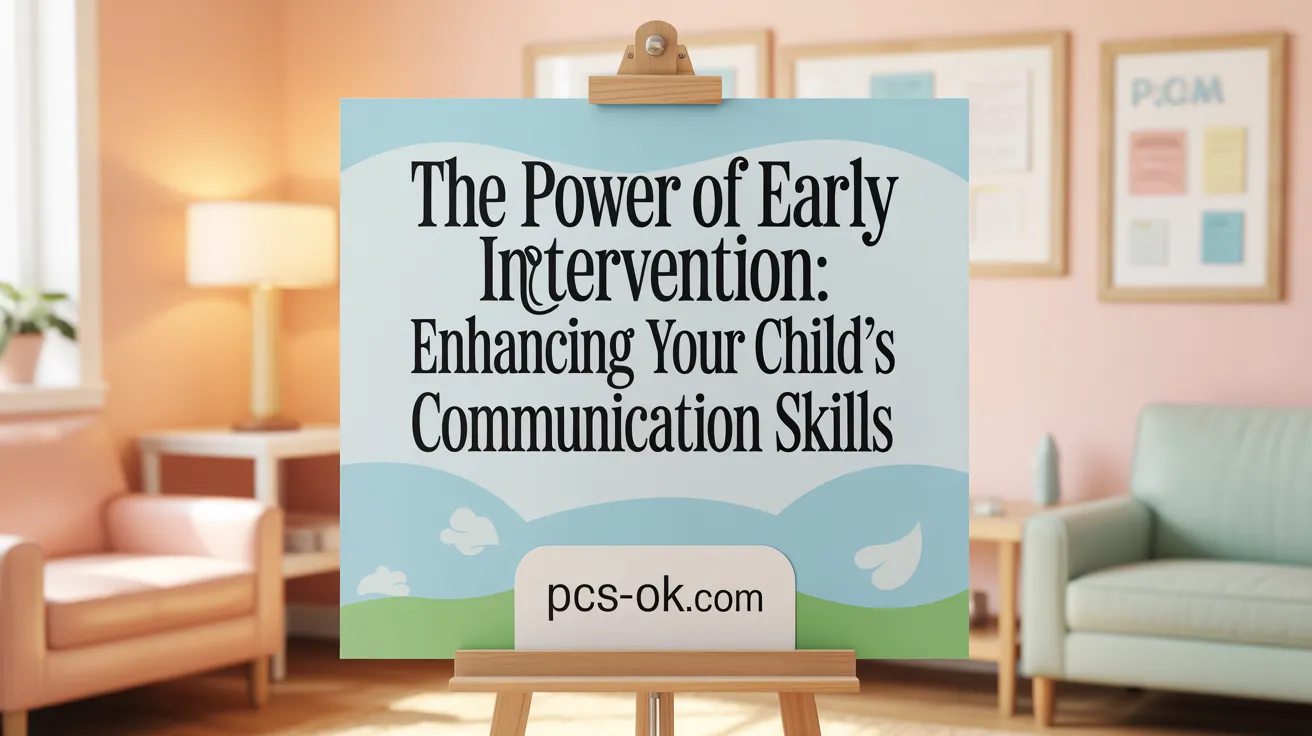
Why is early intervention essential for brain development and communication skills?
Early intervention plays a crucial role in a child’s speech and language development because the first few years are a time of rapid brain growth and plasticity. During this period, the brain is highly receptive to learning new skills, including communication. Identifying and addressing speech delays or disorders early allows trained speech-language pathologists to support optimal development when the brain is most adaptable.
Implementing therapy at a young age can significantly improve a child’s ability to understand language, produce speech sounds, and build vocabulary. Early support also helps develop social skills, academic readiness, and overall cognitive abilities.
What are the risks of delayed intervention, including frustration and behavioral issues?
Waiting too long to seek help for speech issues can lead to several challenges. Children who understand language but cannot effectively express their needs may become frustrated, leading to behavioral problems like tantrums or withdrawal.
Delays in speech can also impact social interactions, causing children to feel isolated or misunderstood. Over time, these communication barriers might affect self-esteem, academic progress, and relationships with peers and adults.
Early intervention helps mitigate these risks by providing children with tools and strategies to improve their communication, reducing frustration and promoting positive social engagement.
How does early therapy involve families for the best outcomes?
Family involvement is a vital component of successful early speech therapy. Therapists work closely with parents and caregivers to incorporate specific strategies into daily routines, play, and interactions.
By engaging families, children receive consistent reinforcement of speech and language goals outside of therapy sessions. Parents learn techniques such as labeling objects, reading aloud, giving choices, and encouraging imitation, which naturally support language development.
This collaborative approach not only enhances therapy outcomes but also empowers families to become active participants in their child’s progress, fostering a supportive environment for communication growth.
| Aspect | Details | Additional Notes |
|---|---|---|
| Importance of early intervention | Capitalizes on brain plasticity for quicker, more effective development | Early recognition and prompt action lead to better outcomes |
| Risks of delay | Frustration, social withdrawal, behavioral issues, academic struggles | Can stem from ongoing communication frustrations |
| Family involvement | Ensures consistency and reinforcement at home | Empowers parents and fosters stronger progress |
Guidelines and Considerations for Identifying Speech, Language, and Communication Disorders and Seeking Therapy
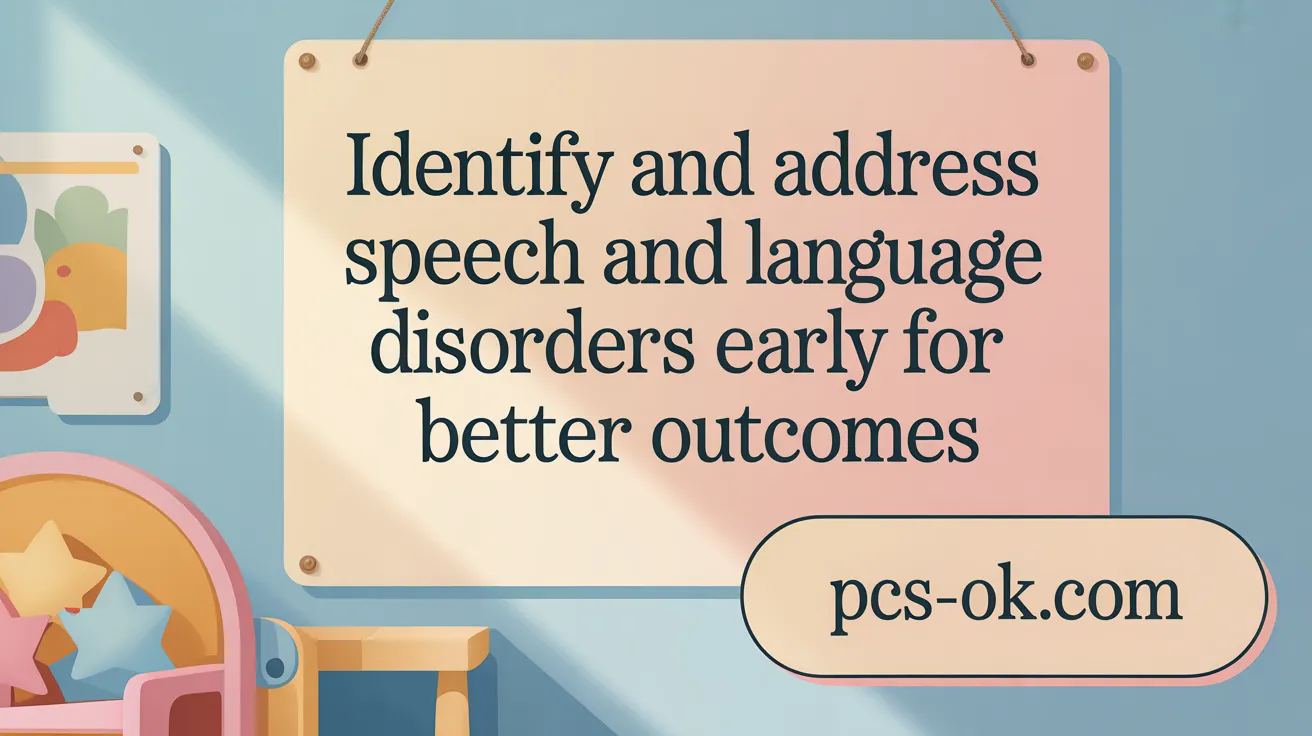
What guidelines exist for identifying speech, language, and communication disorders?
Identifying speech, language, and communication disorders involves thorough assessment procedures. Speech-language pathologists gather detailed case histories and employ standardized tests that cover essential language areas such as phonology, morphology, syntax, semantics, and pragmatics. They also observe the child’s communication behaviors in natural settings.
Monitoring developmental milestones is central to early detection. For example, clinicians check if a child is babbling by 6 months, saying 1-3 words by 1 year, and forming two-word phrases by age 2. For bilingual children, culturally appropriate tools are used to avoid misdiagnosis.
Assessment documentation includes test results, clinical interpretations, diagnostic impressions, and an evaluation of how communication issues affect everyday activities like school performance. Early identification hinges on recognizing signs like persistent speech errors, difficulty understanding or using language, and social interaction problems.
Professional standards recommend evaluations by certified speech-language pathologists or audiologists, avoiding unvalidated treatment methods. Ongoing monitoring and timely intervention are essential to optimize communication skills.
What factors influence when one should seek speech therapy services?
Deciding when to initiate speech therapy depends on several factors. The severity and duration of the child’s difficulties are primary considerations. For instance, children who do not develop a vocabulary of 50-100 words by age 2 or do not produce two-word phrases may need prompt evaluation.
Developmental stage matters—early intervention (before age 3) often results in better outcomes and shorter therapy duration. If issues significantly impair social interaction, feeding, or learning, professional help is usually warranted.
Other influencing factors include coexisting conditions such as autism or ADHD, family history of speech delays, and environmental factors like limited exposure to language.
Practical aspects, including accessibility of services and wait times, can affect timing but should not delay assessment if concerns are present. Parents and caregivers are encouraged to stay vigilant and seek evaluation as soon as developmental concerns arise.
What types of issues warrant professional consultation including articulation, fluency, voice, language, swallowing, and neurological impairments?
Multiple signs signal the need for a professional evaluation. Articulation disorders, such as unclear speech or distortions of specific sounds, often require therapy—especially if speech intelligibility falls below age-appropriate levels.
Fluency issues like stuttering, characterized by repetitions or blockages, should be assessed early to implement strategies that reduce frustration and improve confidence.
Voice disorders, including hoarseness or abnormal pitch, may stem from vocal strain or medical conditions and benefit from specialist intervention.
Language delays affecting receptive (understanding) or expressive (speaking) skills—like difficulty following directions or creating sentences—also warrant evaluation. Children with feeding or swallowing difficulties, such as frequent choking or gagging, need assessments by speech-language pathologists trained in dysphagia.
Neurological impairments, including aphasia after stroke, apraxia of speech, or dysarthria, cause significant communication challenges and require tailored therapy plans. Early diagnosis and treatment can substantially improve outcomes.
Referral process and available therapy options
Parents noticing concerns should first discuss these with their child’s pediatrician, who may perform initial screenings or refer to specialists. If the pediatrician suspects a speech or language issue, they will recommend a comprehensive evaluation by a licensed speech-language pathologist.
Evaluations often involve playful assessments for children to gauge their communication skills effectively. The speech therapist will identify specific areas of difficulty, set goals, and recommend therapy.
Therapy options include in-clinic sessions, which offer personalized, face-to-face interventions, and teletherapy, providing flexibility for families. Early intervention programs can begin as early as six months, emphasizing communication behaviors like gestures and responses.
With proper assessment and ongoing support, children and adults with communication challenges can significantly improve their speaking, understanding, and social interaction skills.
Conclusion: Taking Timely Steps Toward Communication Success
Recognizing the signs of speech and language difficulties early and understanding developmental milestones enable timely access to professional support. Speech-language pathologists offer critical expertise in assessing and addressing diverse communication issues affecting individuals across the lifespan. Early intervention not only facilitates improved communication skills but also enhances social, academic, and personal outcomes. Whether for a child exhibiting delayed speech milestones or an adult facing new communication challenges, seeking help promptly ensures effective therapy and the best chance for long-term success. Families and individuals are encouraged to consult healthcare providers early to initiate speech evaluation and support, paving the way for improved quality of life through better communication.
References
- Signs Your Child Should See A Speech Therapist
- Identifying Speech and Language Concerns About your …
- Speech Therapy: What It Is & How It Works
- 7 Signs Your Child May Benefit from Speech Therapy
- When Should You See a Speech-Language Pathologist?
- What’s The Best Age To Begin Speech Therapy?
- Warning Signs That You May Need to Visit a Speech …
